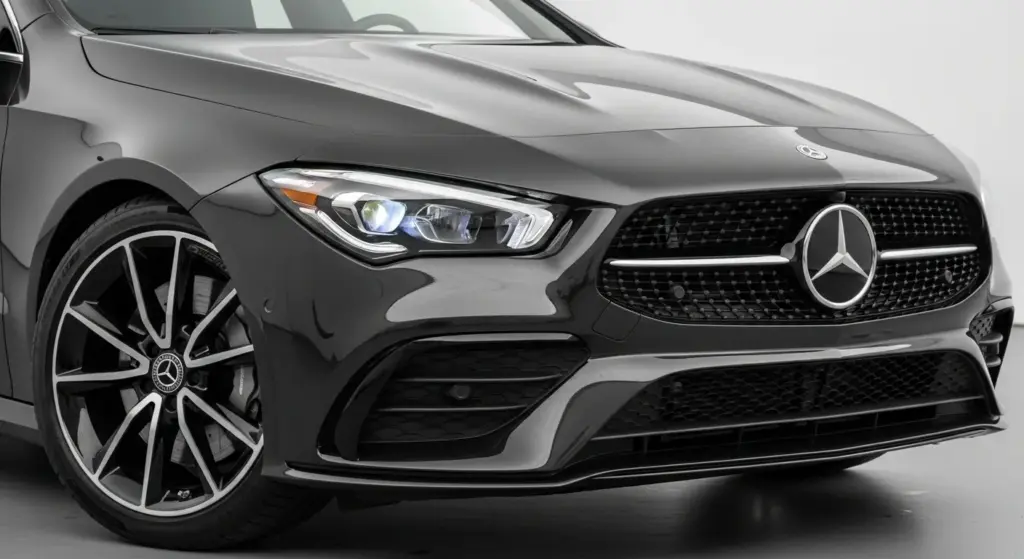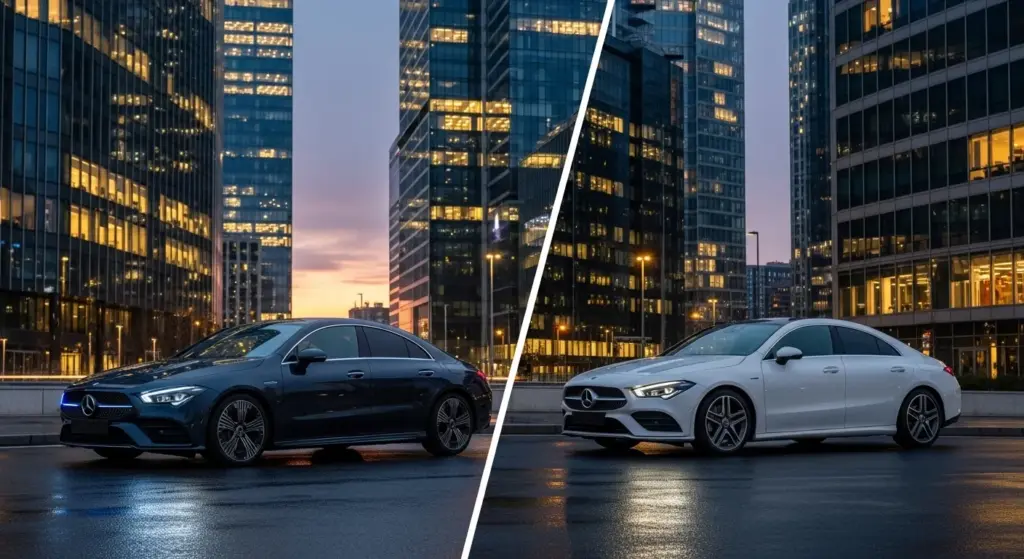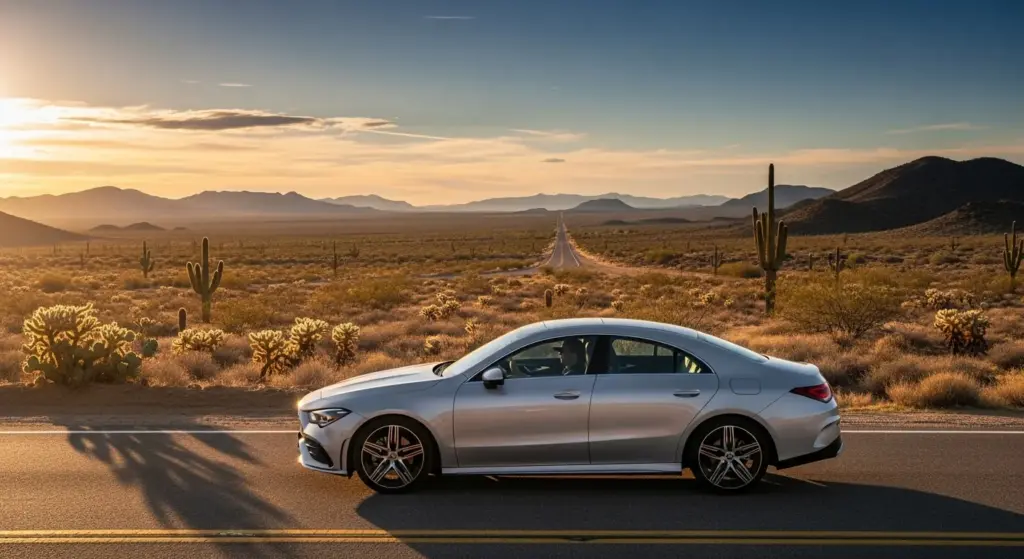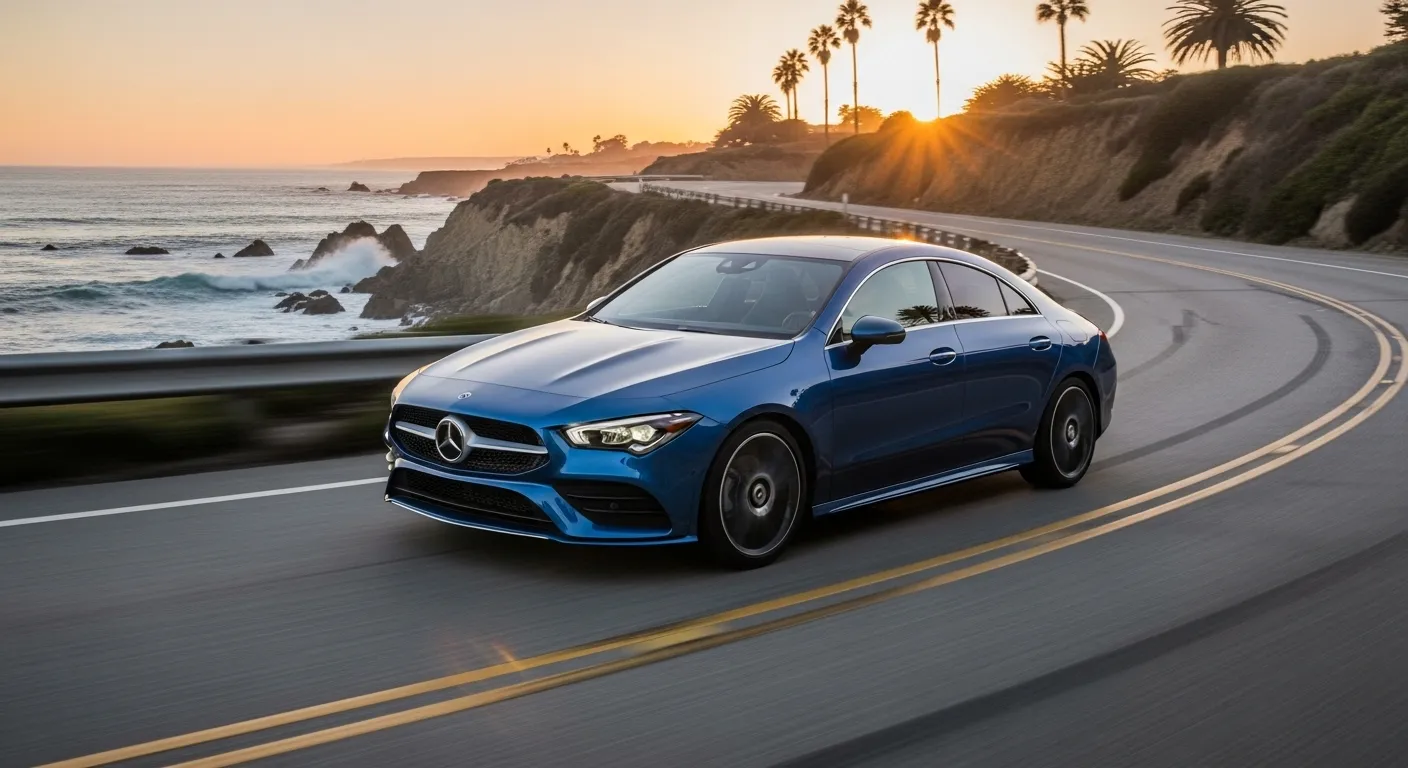In a time when automakers are increasingly forced to choose between pure EV architecture or legacy combustion platforms, Mercedes-Benz is betting instead on unification. The new 2025 Mercedes CLA (and 2026 model year) marks a rare move: the EV and ICE variants share identical design inside and out. For U.S. buyers, that means you won’t have to “look EV-y” to drive electric — a big psychological and branding shift.
Why does this matter now? EV adoption is accelerating, incentives are in flux, and consumers still want optionality. A car that looks the same whether it’s electric or gas-powered gives Mercedes flexibility — and gives buyers a cleaner transition. Combine that with record gas prices, evolving charging infrastructure, and the seasonality of year-end car deals, and Mercedes’ strategy hits at a perfect moment.
Here’s what’s new, what’s bold, and whether this unified-design gambit will succeed in the U.S. market.
A Platform for All: The MMA Architecture that Underpins the CLA
- The 2025/26 CLA rides on Mercedes’ new Modular Architecture (MMA) platform, built from the ground up to support both electric and combustion powertrains.
- By design, this means no more separate “EQ version vs ICE version” bodywork—they share the same sheetmetal, styling lines, proportions, and interior layout.
- The architecture is “electric-first” — even the gas variants incorporate elements (weight distribution, underfloor space, cooling channels) that anticipate battery packs.
- Mercedes frames this as a hedge: electrification is coming, but not so fast that they can abandon ICE. Having one look for both gives them agility.
Impact: For a U.S. buyer, this means that buying an EV doesn’t force a “look-at-me” design. You avoid stigma sometimes associated with EV styling, and in resale or trade-in terms, the visual parity may help retain broader appeal.
Please take a look at this post as well: 2026 Toyota RAV4 Goes Fully Electrified — Hybrid Power, Fast Charging, and a Bold New Look
Performance & Spec Highlights — What the CLA Delivers

Below is a spec snapshot of the key variants (EV side) and how they translate to real-world usability.
| Variant / Spec | Electric (CLA 250+) | Electric (CLA 350 AWD) | Notes / Gas Variant Highlights |
|---|---|---|---|
| Motor(s) | Rear axle single motor | Dual motor (front + rear) | AWD on dual-motor model |
| Output | ~268 hp, ~247 lb-ft (est) | ~349 hp, ~380 lb-ft | Gas version expected with 1.5L turbo + mild hybrid |
| Range (WLTP) | ~492 miles (792 km) | Slightly lower (770–800 km WLTP) | U.S. EPA numbers expected lower, but likely still competitive |
| Charging | Up to 320 kW (800-volt architecture) | Same architecture | 10-minute jump (~200+ miles) claimed |
| 0–60 mph | ~6.6–6.8 sec (single motor) | ~4.8–5.0 sec (AWD) | Gas version will lag behind EV in performance |
| Top Speed | ~130 mph (electronically limited) | Same | Enough for highway cruising |
| Additional features | Front trunk (frunk), MB.OS central computing, AI-led infotainment | Same | Gas model to use MB.OS too |
Real-World Impact:
In daily driving, U.S. buyers can expect the CLA 250+ to behave as a balanced all-rounder. Its range and fast-charging capability give it highway cred, while cornering and handling hide its mass well (as reviewers have noted).
The dual-motor AWD version gives a performance edge, though it trades off a bit on range. The gas version will appeal to buyers who have range anxiety or limited charging access.
Please take a look at this post as well: This $7,499 Naked Triple Is Finally Coming to the U.S. in 2026
First Drives & Early Reviews — What Reporters Are Saying

- In its first-drive reviews, the EV CLA impressed with how it masked its weight through corners. Steering feel and balance were praised, especially for a vehicle in this segment.
- The EV’s charging and range claims are bold. While WLTP numbers tend to be generous, on real-world tests, the CLA delivered ~4.53 mi/kWh (≈13.7 kWh/100 km) in efficient driving.
- Critics also note the compromise: sharing a platform with ICE has added weight and packaging compromises. The “one-size-fits-all” design is elegant but not as optimized as dedicated EV platforms would allow.
- One reviewer warned: the EV version felt slower than lighter rivals like Tesla Model 3, hinting that the weight penalty may catch up under spirited driving.
- The software-defined nature (MB.OS, OTA updates, AI assistant) is a standout: Mercedes treats the CLA as a “digital-first” vehicle, not just a hardware refresh.
For U.S. buyers, early reviews suggest a car that is strong in efficiency, tech, and design — but less so in outright performance compared to lighter EV rivals.
What the U.S. Market Can Expect — Strategy, Variants, and Limitations

- Mercedes is positioning the CLA sedan as its entry-level EV in the U.S., helping bridge from its luxury EVs to more accessible offerings.
- The U.S. will get J1772 (AC) and NACS connector compatibility, plus a CCS-to-NACS adapter.
- For U.S. fast charging infrastructure, the 800-volt architecture gives Mercedes an advantage: 320 kW charging means shorter stops when compatible charging is available.
- However, one big limitation: the CLA Shooting Brake (station wagon) variant is released in Europe but not slated for U.S. sale.
- Mercedes also plans to introduce a hybrid/ICE variant in 2026, giving buyers a transitional option.
- On the performance side, Mercedes-AMG is rolling out a 2026 CLA 45 S Final Edition, powered by a 2.0L turbo (416 hp) as a farewell to the existing generation.
In summary, U.S. buyers will get the high-tech EV sedan first, with gas or hybrid versions coming later. Some international variants won’t reach here, and the U.S. rollout will test Mercedes’ claims in real-world conditions.
Rival Comparison — How the New CLA Stacks Up
- Tesla Model 3 / Model 3 Performance: Lighter, better-known EV brand, stronger acceleration in many trims. But the CLA counters with luxury branding, superior ride comfort, design parity, and Mercedes’ premium badge.
- BMW i4 / i5: More dedicated EV platforms may offer better weight distribution and packaging. The CLA has the advantage of design unification across powertrains and Mercedes’ luxury feel.
- Audi A4 / A3 (ICE/hybrid rivals): The gas version of CLA will compete, but the EV CLA variant gives Mercedes a broader reach while keeping visual continuity.
- Lucid Air, Polestar 2, or emerging EV challengers: These may out-range or outperform in niches, but the CLA’s balanced mix of performance, brand prestige, and design flexibility can appeal to mainstream U.S. buyers.
Because Mercedes has opted for a unified-look strategy, the CLA may win over buyers who want to hedge bets: pay for the look and upgrade later if you switch powertrains.
Challenges and Risks — Where Mercedes Could Stumble
Weight & Efficiency Penalties: Sharing structure with ICE adds mass and packaging compromises. As critics note, the CLA EV might not achieve the agility of more purpose-built EVs.
Real-world Range vs Claims: WLTP figures (492 miles) may translate to closer to 300–350 miles in U.S. EPA terms — still good but less headline-grabbing.
Charging Infrastructure Gaps: The advantage of 320 kW fast charging only helps if compatible chargers are accessible. In some U.S. markets, that may lag.
Pricing and Incentives: The CLA’s pricing and how federal/state EV incentives apply will be critical in buyer uptake.
Software / Reliability Risks: As a software-defined vehicle (SDV), OTA updates and software stability become mission-critical. Any glitches or slow rollout could dent perception.
Delayed Gas/Hybrid Variant Impact: Some buyers may delay purchase to see the hybrid version in 2026, hurting early sales.
🏁 Conclusion
The 2025 Mercedes CLA / 2026 model-year is a bold statement from Mercedes: electric or gas, you get the same sleek, premium design. Its MMA architecture, high-performance charging, and AI-infused software make it a standout in a crowded compact-luxury EV space in the U.S.
That said, the weight compromises and real-world range puzzles remain open questions. For those who want luxury, future-readiness, and the ability to pivot powertrains later, the CLA is a compelling choice. But if you’re chasing raw EV performance or lightness, rivals might still edge ahead.
